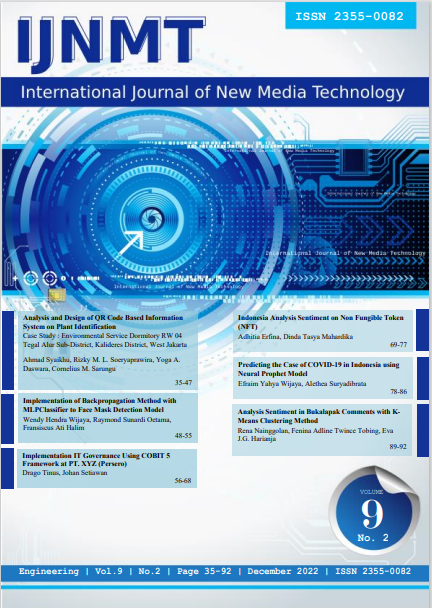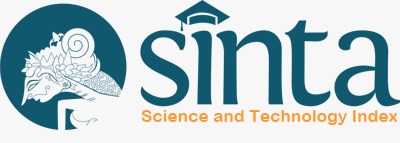INDONESIAN ANALYSIS SENTIMENT ON NON FUNGIBLE TOKEN (NFT)
DOI:
https://doi.org/10.31937/ijnmt.v9i2.2760Abstract
NFT or Non-Fungible Token is a unique token attached to a digital asset that is connected to the blockchain system. Various assets, digital art, music, tweeters, memes, sold as NFT, NFT has been widely discussed on various social media, one of which is Youtube. NFT has become a new trend for the Indonesian people, based on the fact that someone who sells selfie photos at the Open Sea is viral because people think it is a trivial thing but why do they produce it, but people actually accept the trend as a mistake, they intentionally upload their identity on the platform. This Open Sea, this happened because there was little information related to NFT and the public did not really understand that NFT could be a bridge for criminals. But in this case, many people as artists have been greatly helped in the marketing of their art. And even when the stock market is down, NFT remains one of the digital assets that attracts the attention of the world community, therefore this study was made to analyze the public's response with sentiment analysis, data obtained from Youtube content comments and then classified into Positive, negative, and neutral classes with TF IDF for the process of word weighting and classification using the Naí¯ve Bayes Classifier algorithm. The test is carried out by calculating accuracy, precision, recall and F1-score, using a variety of training data and test data. And the accuracy results are 64%, for positive prediction class precision is 63%, neutral class precision is 83%, while for negative prediction is 0% and recall obtained from positive is 99%, neutral recall is 0.7% while negative is 0%. These results are the data obtained on Youtube comment
Downloads
Additional Files
Published
How to Cite
Issue
Section
License
Authors retain copyright and grant the journal right of first publication with the work simultaneously licensed under a Creative Commons Attribution-ShareAlike International License (CC-BY-SA 4.0) that allows others to share the work with an acknowledgement of the work's authorship and initial publication in this journal.
Authors are able to enter into separate, additional contractual arrangements for the non-exclusive distribution of the journal's published version of the work (e.g., post it to an institutional repository or publish it in a book), with an acknowledgement of its initial publication in this journal.
Copyright without Restrictions
The journal allows the author(s) to hold the copyright without restrictions and will retain publishing rights without restrictions.
The submitted papers are assumed to contain no proprietary material unprotected by patent or patent application; responsibility for technical content and for protection of proprietary material rests solely with the author(s) and their organizations and is not the responsibility of the IJNMT or its Editorial Staff. The main (first/corresponding) author is responsible for ensuring that the article has been seen and approved by all the other authors. It is the responsibility of the author to obtain all necessary copyright release permissions for the use of any copyrighted materials in the manuscript prior to the submission.















